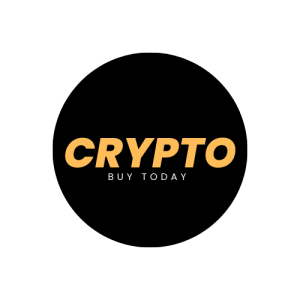The Motley Fool reports the top 2 cryptocurrencies to buy and hold long term. One is known for its blockchain technology and the other is known for its smart contracts feature.
The crypto market has crashed several times in the last few years. A prolonged sell-off between January 2018 and December 2018 cut the market down by nearly 90%. Then, after surging to a new high of $2.5 trillion in May 2021, the market fell more than 50% by July. It then recovered and peaked around $3 trillion in November 2021, before again getting cut in half.
Today, the crypto market is worth $2 trillion, meaning it’s still down 33% from its high. But if you can handle the type of volatility I just described, now looks like a good time to buy. Every past downturn has eventually ended with the market soaring to new highs, and there is no reason to believe this time is any different.
With that in mind, here are two cryptocurrencies that could make you richer over the next decade.

Image source: Getty Images.
Bitcoin: A $1 million price target
Bitcoin ( BTC 0.71% ) was the first cryptocurrency to see widespread adoption, and though it made its debut more than a decade ago, it remains the most popular. Except for a few blips — like Dogecoin in January 2021 — Bitcoin has consistently ranked as the most mentioned cryptocurrency on Twitter. More importantly, with a market cap of $775 billion, it accounts for nearly 40% of the total crypto market’s value.
What’s behind that popularity? Bitcoin was the first mover in the cryptocurrency space. In fact, that edge has literally made bitcoin synonymous with cryptocurrency in general, and the explosion of the crypto market has served as a powerful tailwind. Bitcoin has been adapted by fintechs such as Block and PayPal, in addition to companies like Tesla and MicroStrategy putting the cryptocurrency on their balance sheets. Moreover, bullish comments from asset managers like Ark Invest CEO Cathie Wood have also contributed to its popularity. Wood recently reiterated her belief that Bitcoin could reach $1 million by 2030 — a 23-fold gain for investors over the next eight years.
Additionally, the collective hash rate of all miners on the Bitcoin network is orders of magnitude higher than any other blockchain, meaning Bitcoin is far more secure. Better yet, Bitcoin is a finite asset. Its source code limits it to 21 million coins, and that scarcity has made it valuable. Why? Any economics student can tell you that the price of an asset depends on supply and demand. So, when demand for a finite asset rises, its price will rise too.
Going forward, investors have reason to believe Bitcoin’s popularity will persist. More institutional asset managers — a cohort with over $100 trillion in assets at their disposal — are buying cryptocurrency, and Bitcoin is the most popular digital asset among institutional investors. That momentum should keep Bitcoin’s price growing over the next decade.
Chainlink: A connection between blockchains and real-world systems
Smart contracts are self-executing computer programs, and they form the heart of decentralized applications (dApps) and decentralized finance (DeFi) services. However, the real-world utility of smart contracts is limited because they exist on a blockchain, a decentralized network that cannot communicate with external systems. Chainlink ( LINK 0.65% ) solves that problem, making it possible to bring real-world data onto any blockchain without compromising its decentralized nature.
Specifically, Chainlink is a decentralized network of oracles powered by the LINK token. Oracle node operators — the people running the hardware and software — must stake LINK tokens in order to participate. When a smart contract requests data from the platform, node operators bid on the job, and the Chainlink protocol selects the appropriate number of oracles. Once the data is gathered, the protocol reconciles the information to ensure an accurate result, and the node operators are paid in LINK.
Here’s an example: Consider a DeFi marketplace selling tokenized real-world assets, such as real estate or collectibles. The price of those assets is subject to change over time, so it cannot be coded into the smart contract. Instead, multiple Chainlink oracles would obtain pricing information at the time of the proposed sale — probably from multiple different appraisers — and that data would be aggregated and reconciled by the Chainlink protocol to ensure its accuracy, then added to the smart contract.
Of particular note, LINK is a finite asset, capped at 1 billion tokens. In other words, as more smart contracts are architected requiring real-world data, demand for Chainlink oracles should rise. In turn, that should create demand for the LINK token, sending its price higher. Of course, Chainlink isn’t the only oracle network in the blockchain industry, but it is the most popular by a long shot. That’s why this cryptocurrency looks like a smart buy.
This article represents the opinion of the writer, who may disagree with the “official” recommendation position of a Motley Fool premium advisory service. We’re motley! Questioning an investing thesis – even one of our own – helps us all think critically about investing and make decisions that help us become smarter, happier, and richer.

